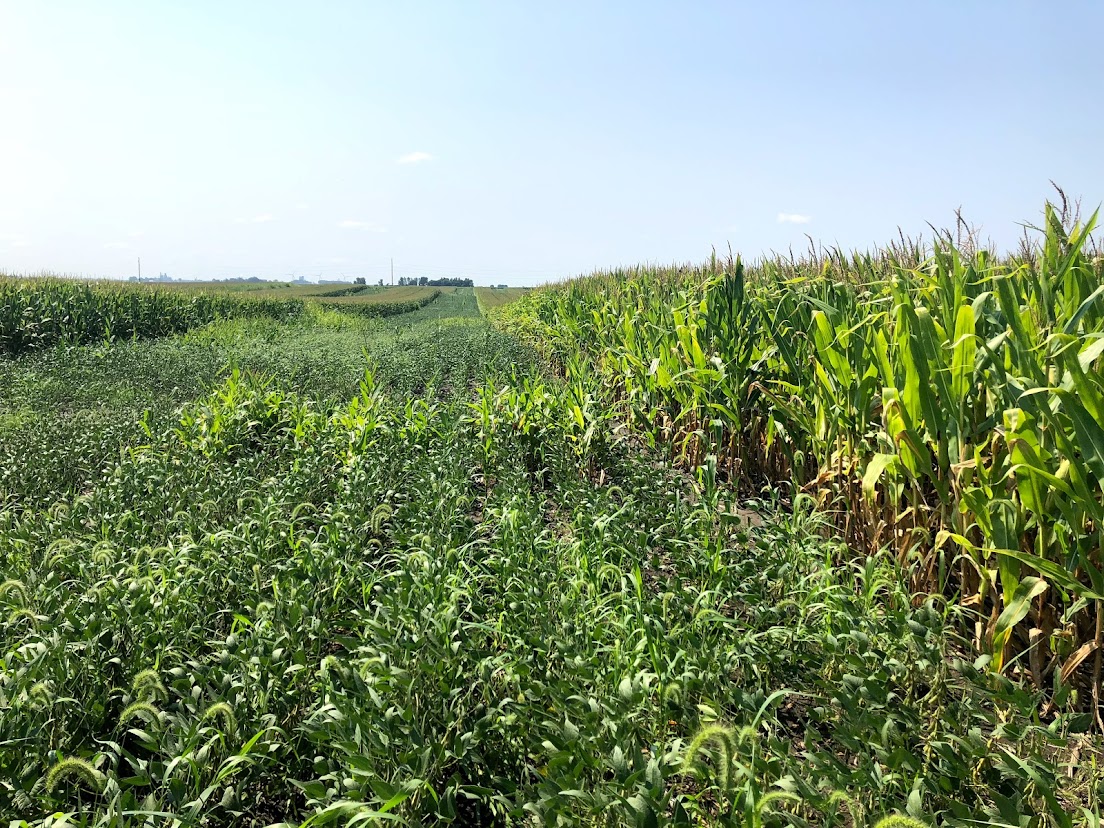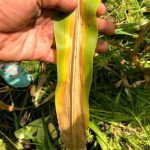Nitrogen
Amber Anderson
- Outline basic steps in the nitrogen cycle
- Identify potential sources of loss or transformation resulting in decreased available N in the soil
- Predict differences in loss of nitrogen under contrasting conditions.
Importance
Nitrogen is critically important to plant growth as it is a part of chlorophyll, nucleic acids (DNA), amino acids, and proteins. Therefore, a nitrogen-deficient plant will appear yellow with decreased growth. Despite being a major component of the air around us, nitrogen can regularly be a plant-limiting nutrient. Today, commercial nitrogen fertilizer production, known as the Haber-Bosch process, uses large amounts of energy to convert the nitrogen in the atmosphere to plant-usable forms. Previously, legumes and manures were used for nitrogen management within agricultural systems.


Nitrogen is a challenge for management due to its significant biological reactivity, interactions with soil, and potential negative impacts on human health and the environment. The US Environmental protection agency (EPA) has set a limit of 10 ppm (10 mg/L) of nitrate in its safe drinking water standard due to the potential negative health implications, such as blue baby syndrome. Environmentally, nutrient enrichment coming from the corn belt contributes to the dead zone in the gulf of Mexico.
Simplified Nitrogen Cycle

Transformations
- Fixation: N2 gas converted to plant-usable form through either free-living or symbiotic organisms. Commercially or industrially, atmospheric nitrogen can be fixed using significant amounts of energy through the Haber-Bosch process. This nitrogen is added to the soil and/or plant available pool.
- Nitrification: N is biologically converted to nitrate (NO3–), which can be lost due to leaching.
- Denitrification: Nitrate (NO3–) to N2 or nitrous oxide (greenhouse gas), usually occurs due to biological activity and anaerobic conditions, like could exist in a waterlogged soil. This is a loss from both the soil and available pool.
- Immobilization: Nitrogen removed from plant-available pool due to uptake by microbial tissues, so a short-term loss from the plant-available pool, but not a long-term loss.
- Mineralization: Organic nitrogen converted to plant-available nitrogen, the reverse of immobilization.
- Leaching: Nitrate (usually) lost due to moving through water and out of the system.
- Volatilization: Ammonia (NH3) lost from the soil as a gas, like if anhydrous ammonia is applied to dry soil or with equipment that didn’t successfully seal the furrow.
- Ammonification: N is converted to NH4+ form of nitrogen.
Note that microbial activity is a major component of many transformations, with soil conditions, such as low oxygen or warmer soil temperatures, change the types and rates of transformations present.
Legumes and nitrogen management
Historically, legumes like alfalfa, beans, and peas, in combination with animal manures or composts, were used to add nitrogen or manage nitrogen in agricultural or horticultural settings. Many of these techniques are still used, based upon available resources.
Nitrate testing
In Iowa, any nitrate remaining in August is assumed to be lost before the next cash crop would utilize it, so it is not regularly included in standard fall soil testing. In drier climates, this may not be the case, and fall or winter nitrate testing may occur. The spring soil nitrate test may be used after corn has begun its growth to determine if an additional side-dress application of nitrogen would be warranted.[1] Fall cornstalk testing could be used to assess if nitrogen was sufficient or likely in excess to determine future management. If still possible, a cover crop could be used to uptake the remaining nitrate and prevent it from leaching.
- This video was developed by Dr. John Sawyer with ISU Extension.[2]
- Nitrogen management is dynamic due to its biological reactivity
- Potential losses can occur to either air or water
- Biological transformations significantly impact the plant-available N

